Can home gardeners reduce plastics pollution?
Unless you’ve been living in your shed you’ll be aware of recent media focus on the worldwide environmental impact of plastic containers. We’ve all been shocked by the images of the huge islands of floating plastic in our oceans. The profitability of the modern horticulture industry was founded on the introduction of plastic plant containers. We’ve all benefitted from the keen pricing and variety of supply that plastic has afforded gardeners. But there is an environmental cost to this. We may have beautiful gardens but the plastics are polluting land and seas.
Plant pots are usually made from High Density Polyethylene (HDPE) or Polypropelene and are harder to recycle than the Polyethylene Terephthelate (PET) from which plastic drinks bottles are made. My local Council will not accept plastic plant pots in my recycling bin and there are very few garden pot collection schemes available.
Whilst some growers now use recycled plastics and coir pots, the spotlight is still likely to shine on the horticulture industry to apply thought to finding alternatives to plastic pots. As with the food packaging industry there will be no immediate answers but gardeners who are worried about the environment can make small changes that will make a difference.
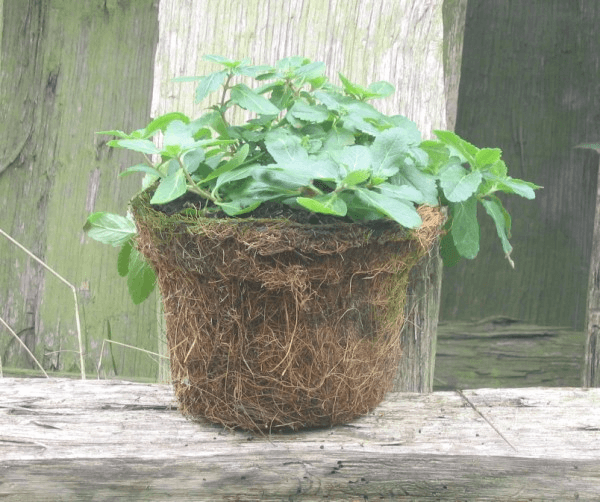
Coir husk pot – The Hairy Pot Company
Buy products in biodegradable pots – better for root development?
There are a few suppliers out there who grow plants for sale in biodegradable pots. Since 2000, The Hairy Pot Company has been raising and selling perennials and herbs in coir pots. Its Managing Director, Derek Taylor, always found it perverse to be selling an essentially green product encased in plastic. Competition from bigger nurseries and pressure from his customers to produce more cheaply meant that the nursery’s profitability was being squeezed. A point of differentiation was needed and Derek and his team felt that devising a more sustainable product could be the answer.
The company experimented with pots made from rice husks, pressed peat, pressed cardboard, miscanthus and coir fibre before choosing the coir fibre pots. These are made in Sri Lanka using waste husks from coconut farms. Each pot is handmade and dipped in organic latex, from local rubber farms, to keep the fibres together. The pot manufacture creates local employment.
Over the years the Hairy Pot Company has evolved to raise 300,000 plants a year in coir pots and are stocked in many large garden and plant centres. Not only this but they also transport in reusable wooden trays, and are experimenting with non-plastic labelling. The pots are much more fiddly to handle in a commercial process than plastic, so whilst each pot costs 30 pence more than plastic, the increased labour costs result in a product that generally costs £1 more to the customer.
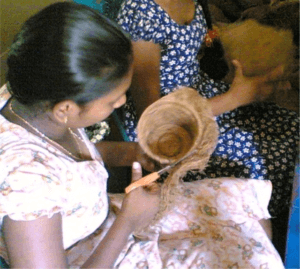
Making Coir pots in Sri Lanka – The Hairy Pot Company
They may cost a bit more but there is good evidence that a plant grown in a coir pot will have better root development than one grown in plastic. This is due to a process known as ‘root pruning’. When a root reaches the edge it senses the cooler air and starts to branch, creating a denser network of roots. By contrast, when you take a plant out of a plastic pot, it’s easy to see that when a root hits the pot wall it starts to go round in circles.
A list of suppliers of plants from the Hairy Pot Company is available at www.hairypotplants.co.uk
Buy Biodegradable pots to use at home
The attractive coir pots used by the Hairy Pot Company can be bought in a range of sizes direct from the supplier (www.thenaturalgardener.co.uk). The pots can be single use and planted out directly into the soil, although I have used some a couple of times if not planted out.
Less hairy but possibly easier to stack are fibre pots which are widely available from online suppliers and garden centres. These are single use, come in a range of size and sadly often wrapped in plastic.
For bigger plants there are fewer products available. The advantage of biodegradable pots in terms of root development and easy planting, fall away when a robust product is needed for heavier plants or those which will stay potted for a long time. The Natural Gardener also sells larger cylindrical coir pots in 3, 9, 10 and 15 litre sizes. Trouva (www.trouva.com) sells recycled paper bag planters, which are waterproofed with latex.
Make your own paper pots
Making your own pots out of old newspaper is a great idea. I have wooden widgets in two sizes for this purpose. There are a few suppliers out there but mine are made of oak and come from the Nether Wallop Trading Company (www.netherwalloptrading.uk). They are very easy to make, it’s a great form of occupational therapy and even my children like to help.
A word of warning though – they are time-consuming to make in bulk so if you think you’ll be using lots then get cracking in the long winter months and store them somewhere dry. There’s nothing worse than having lots of seeds to sow and transplant and nothing to put them in – that’s when the convenience of plastic will beckon.
I do also find them fiddly to fill. I find the best way is to stand them in a container, packed in fairly tightly to stop them toppling, then sieve compost over them all to fill. If you’ve stood them in a holey tray (I have an old blue plastic mushroom tray) the excess compost can be shook through.
In terms of paper, newspaper is recommended over glossier prints, presumably because it allows more air penetration and breaks down quicker in the soil. Having said this, I am experimenting this year with some larger glossy pots made from old garden catalogues. My thinking is that they are sturdier than newspaper and useful for plants that will stay in the pots longer before planting out. It’ll be easy to take the plants out as one would with plastic. They are also incredibly pretty and making them made me smile.
Re-use the pots we already have
There are an estimated 500 million pots in circulation every year – so much plastic. Like many gardeners, I have an area of my shed devoted to stacks of plastic pots and trays. My husband calls this the ‘pot cemetary’ but I prefer to call it the ‘waiting room’. Since I grow lots of plants from seed, I keep hold of the pots, trays and modules of any plants I buy and reuse them for cuttings and seedlings.
The larger pots are used to bring dahlia tubers into growth and for growing greenhouse veg such as tomatoes and aubergines in. I don’t see why a grow bag is any easier than filling a pot I already have with compost. I rarely have to dispose of any and usually only do so when a pot splits.
Of course I am lucky to have space to store these. They come in so many shapes and sizes, but if you do take time to sort them properly, a neat store is possible. Pots of the same size leaned against a wall can become a stack taller than yourself. I am too lazy to spend much time sorting so I don’t mind the toppling piles of plastic. Their utility far outweighs their unattractiveness.
I try and avoid buying foods in plastic punnets but washed out they make great seed trays and the deeper ones are useful upturned as mini propagators. Cardboard loo rolls are great for sweet peas and peas as the roots like to grow deeply. Stand several loo rolls on end in boxes or trays for support or even tape them together. There’s nothing more frustrating than them toppling over and spilling compost everywhere.
If you do much growing from seed, you’ll soon realise that the ability to carry the seedlings around, such as in and out of a greenhouse, is paramount. Also grouping seedlings together to save labelling each and every one requires lots of trays. I try and keep hold of any wood or plastic trays (from garden centres, wine crates etc) and even cut down cardboard boxes for this purpose. Cardboard obviously weakens when wet so make sure you put a hand under when carrying these around.
I must also broach the issue of washing. Any book or tutorial will tell you to wash pots thoroughly before reusing them. There is no doubt that any plant nursery or larger horticultural grower for sale needs to be scrupulous in this regard to prevent the spread of plant diseases. I have been known to get my soap suds out but I admit I don’t always bother.
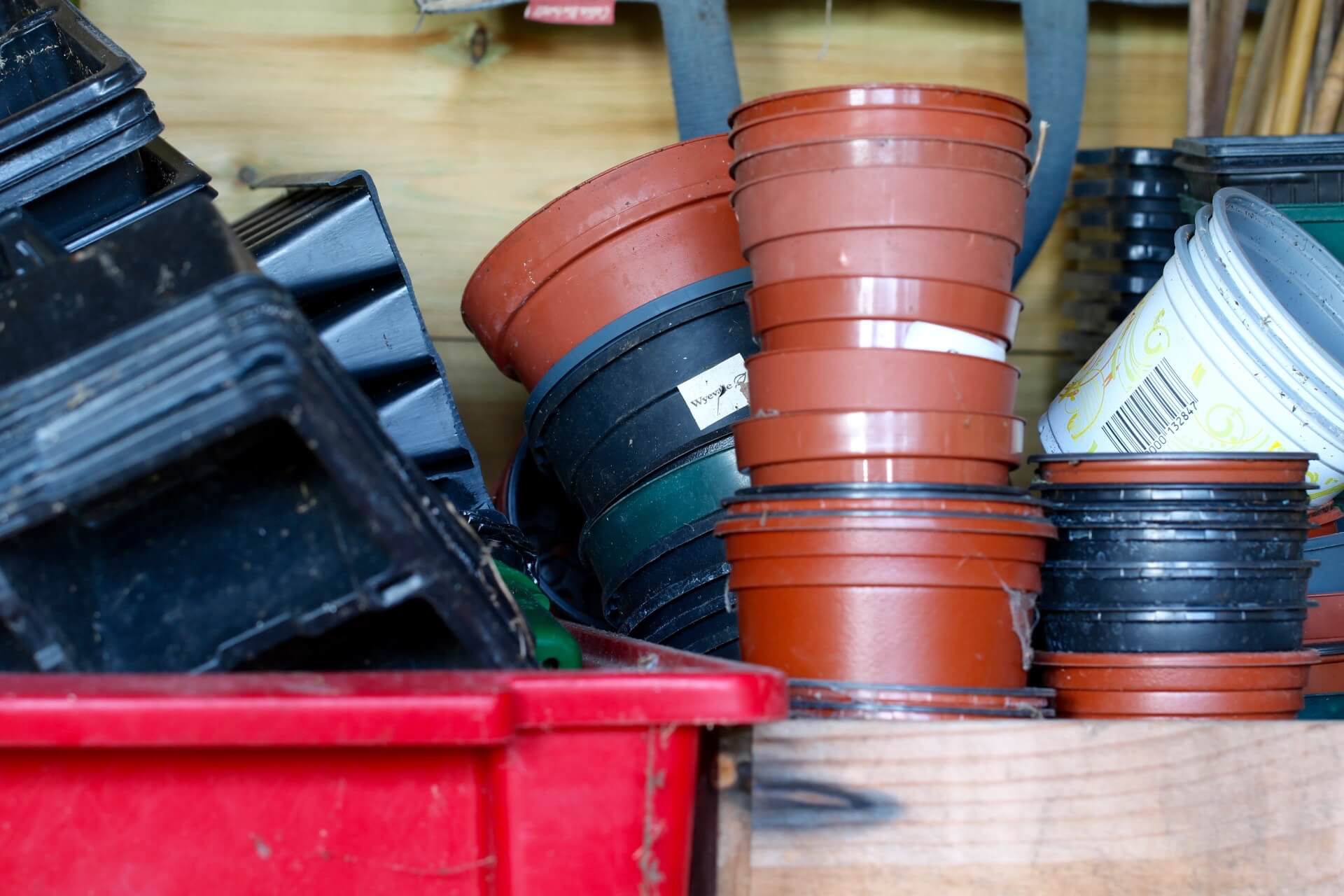
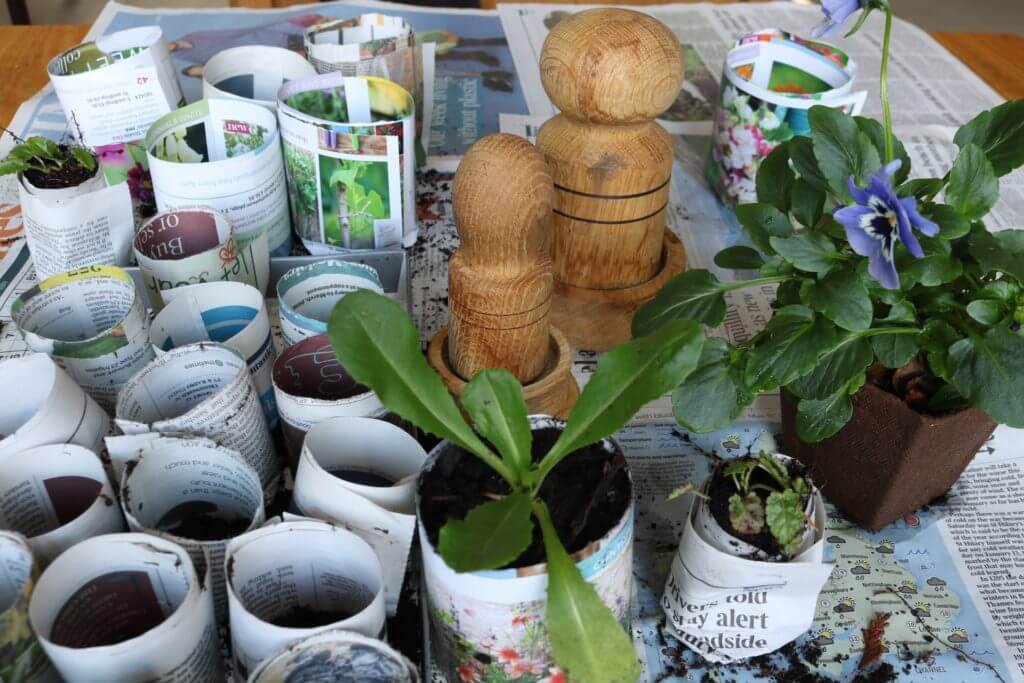
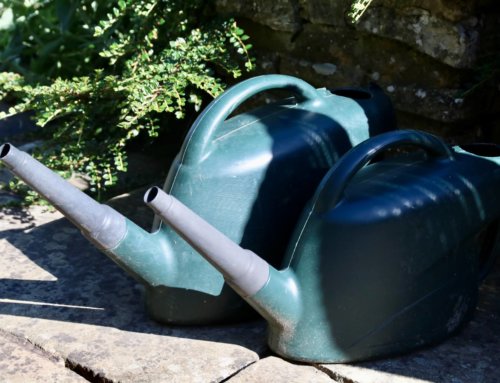
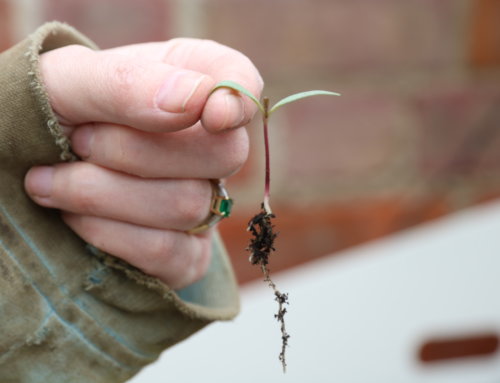
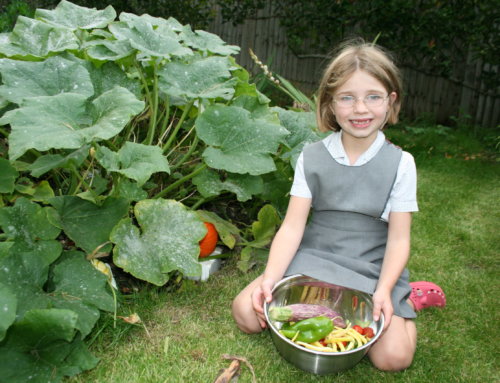
Very interesting I also save all pots and lots of plastic containers for mini greenhouse but I wouldn’t mind paying an extra pound for a voir pot
Thanks Gillian and yes it’s a very interesting and important topic. I’ve had a few comments on my facebook page from people wondering why growers can’t wash and reuse pots, like we do. The problem is that they need to be careful about plant diseases. The Hairy Pot Company products are a great alternative and I love the fact that healthy root development is encouraged in these pots. Have you checked their website to see if they have suppliers near you?
I ran out of pots for seedlings this year and started using toilet rolls for things other than peas. I also used the tube that scotch bottles come in to make temp pots – that snow fall has really put everything behind schedule so instead of going into the garden, things needed potting up into pots I didn’t have. Necessity is the mother of invention. Happy mothers’ day.
Great you’ve found so many alternatives to plastic. I am really really behind. Only sweet peas sown so far! Happy growing and I look forward to seeing more of your plants on your blog.
I use old tights to store my old plant pots. They can be hung on a nail in the shed and don’t fall over. It is easy to select the appropriate size for the job.
What a great idea. I’ll have to give that a try.
Interesting. I worked for a rope maker back in the 80s. Many of their ropes were from Polypropelene. They were very proud of the fact that all the waste from the factory was sent off to be made into plant pots.
That sounds like a great use of plastic pots. The solution to this could well be more products from recycled plastic but until then so many recycling schemes just won’t collect them. Let’s hope more innovation follows…